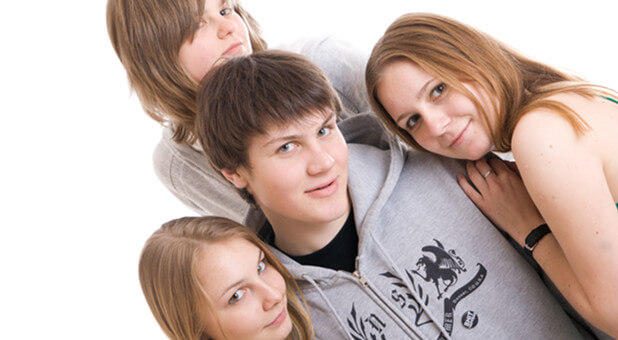A recent text from a frustrated kid read “I hate reality.” While that may sound melodramatic, kids have a finely honed sense of justice. They are pretty certain that hunger should be addressed, toys should be shared, and love should be perceived. Yet nearly half of all the children on our planet live in poverty: out of 2.2 billion children worldwide, 1 billion subsist on less than $2.50 per day. Poverty is more than an income level. It represents a higher risk of dying, and a lower horizon of choice. Reality, for too many children in our world, means being pushed onto a path they do not choose, into a life they long to change.
As a doctor working in East Africa for over two decades, I’ve participated in programs bringing many resources to bear upon the issue of child poverty. Health care, nutrition, school sponsorships. Outreach, education, safety. But perhaps the greatest leverage for change does not come from those obvious material provisions. Perhaps the real key lies in story.
Story seeks to make sense of what a child sees, of how this broken state ensued. Every growing mind asks, “Why?” and story provides insight and answer. But story does more than diagnose the problem, the best stories also point to a better ending, a hope that what is seen is not the only thing that can be. Story offers a way to move from reality to beauty. In A Chameleon, A Boy, and A Quest, we meet a young protagonist named Mu who is mired in a pretty rough reality. His unlikely guide offers little in the way of strength or rescue, but what he does offer Mu is story. He begins to rewrite the narrative of Mu’s past, giving a new perspective, and gently prodding him towards a new ending, one that may require sacrifice and courage but also offers the possibility of redemption.
Of the billion children with lives like Mu’s, few will ever have their hands on a book, even those able to go to school. However, they will be shaped by story, by oral traditions, family histories, and religious texts. Long before the invention of printing, the ancient Biblical writers admonished parents to pass on the story of their people to their children. They understood the importance of chronicling the arc of creation and sorrow, of rescue and movement towards joy. They knew that their children needed the identity found in their own definitions of nation and place before they heard the disparaging rewrites of truth dominated by their conquerors. Oppressed peoples through the ages have clung to their own tales.
What of the other billion, the children who have one foot out of poverty? Or what of the small percentage of children whose parents scour lists to find them quality reading material? Story matters for these kids too. While they may have little reason to hate reality, they need the empathy to connect with those who do. If half the children in the world experience hunger, isn’t it important for the other half to know this? We hope that the next generation will be more just, more kind, more fair, and more involved than ours, because we know the world hinges upon their perceptions and choices. In order for that to happen, our children need good stories. Stories that move majority-world issues from dry theoretical words to nail-biting dilemmas, that introduce with sympathy and dignity the lives of humans very different from the reader.
My kids grew up needing a narrative that acknowledged war and disease and loss, and they needed to see the people and places of their home in the context of a broken world being quietly redeemed. That led me to lay down my stethoscope for hours of writing here and there, where I could, to create stories. It is my hope that some children will find a thread of hope in my books, and the rest will find a thread of understanding. That is the power of story.
J.A. Myhre serves as a doctor with Serge in East Africa where she has worked alongside her husband, Dr. Scott Myhre, for more than two decades. She earned her medical degree from Johns Hopkins University School of Medicine and completed her pediatric training at Northwestern University’s Children’s Memorial Hospital. She also received a Master’s in Public Health degree from Johns Hopkins School of Public Health.














































